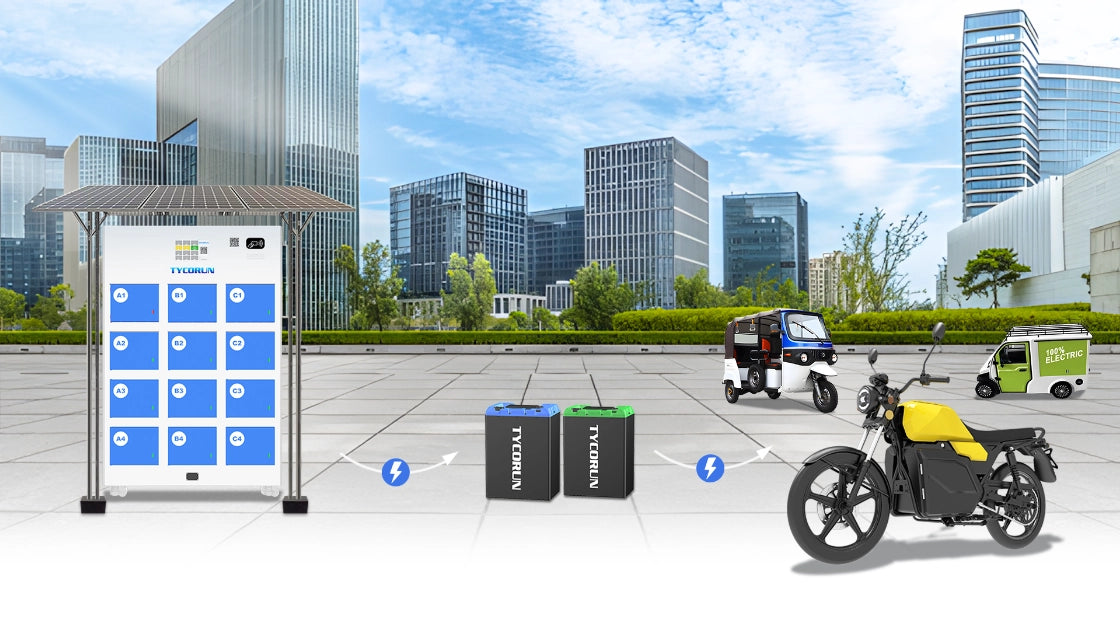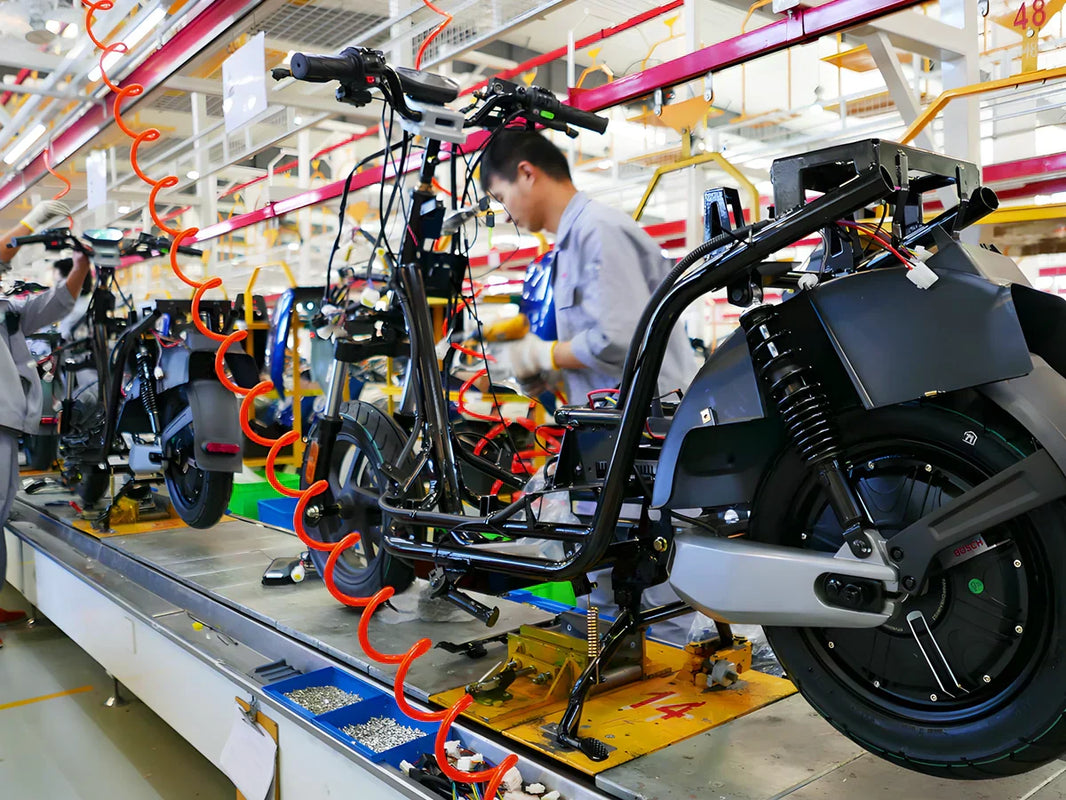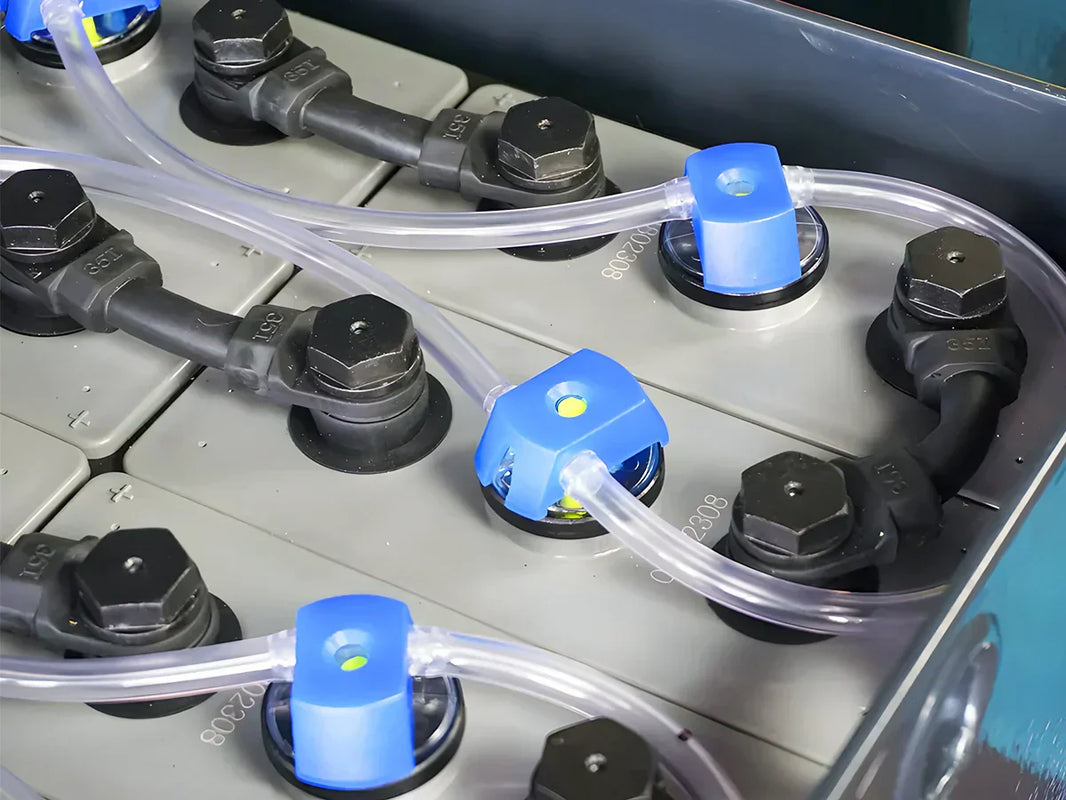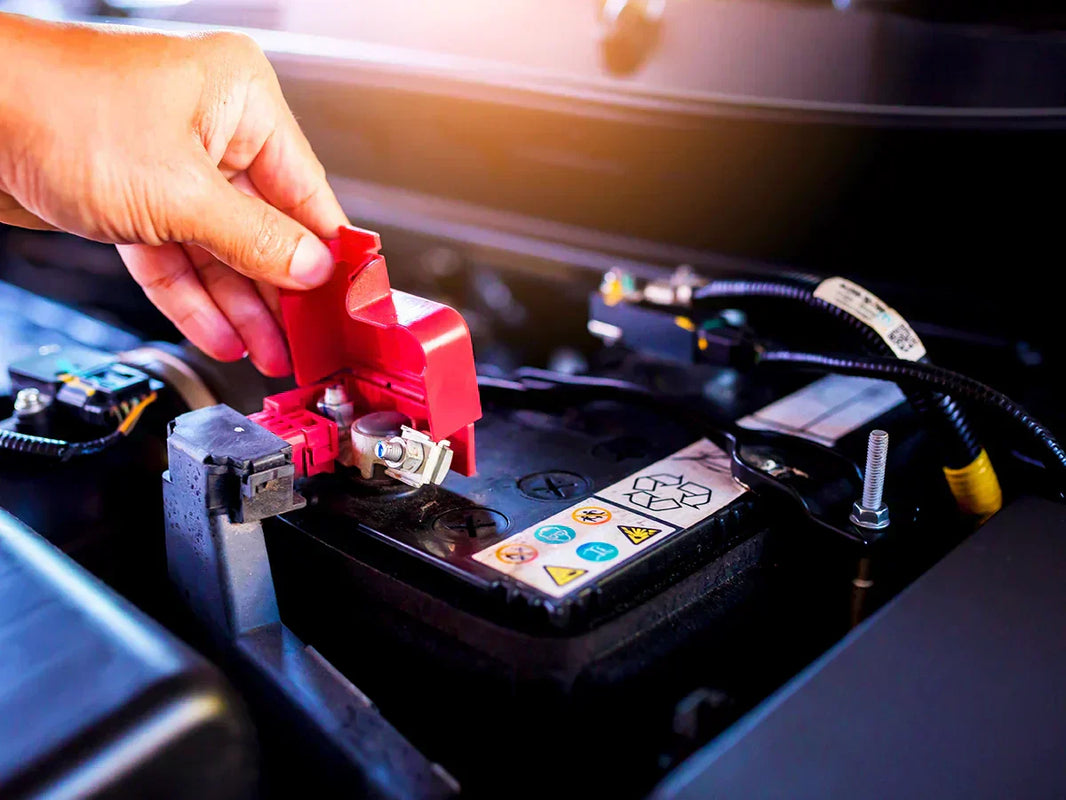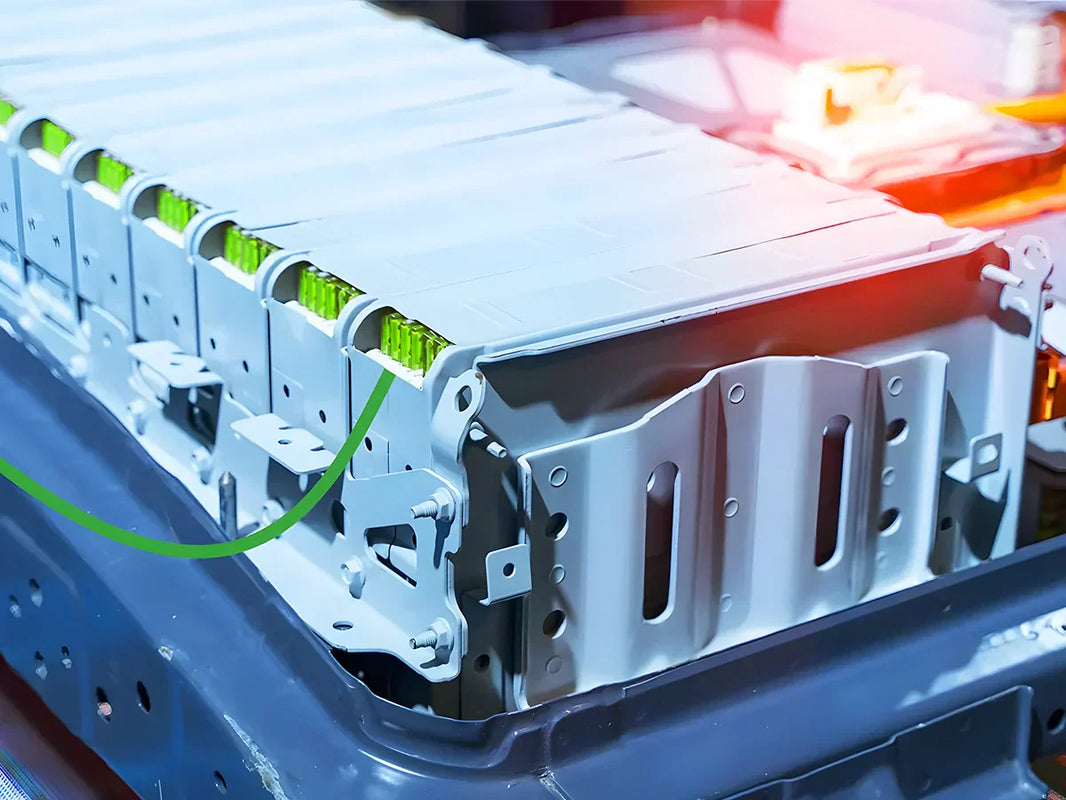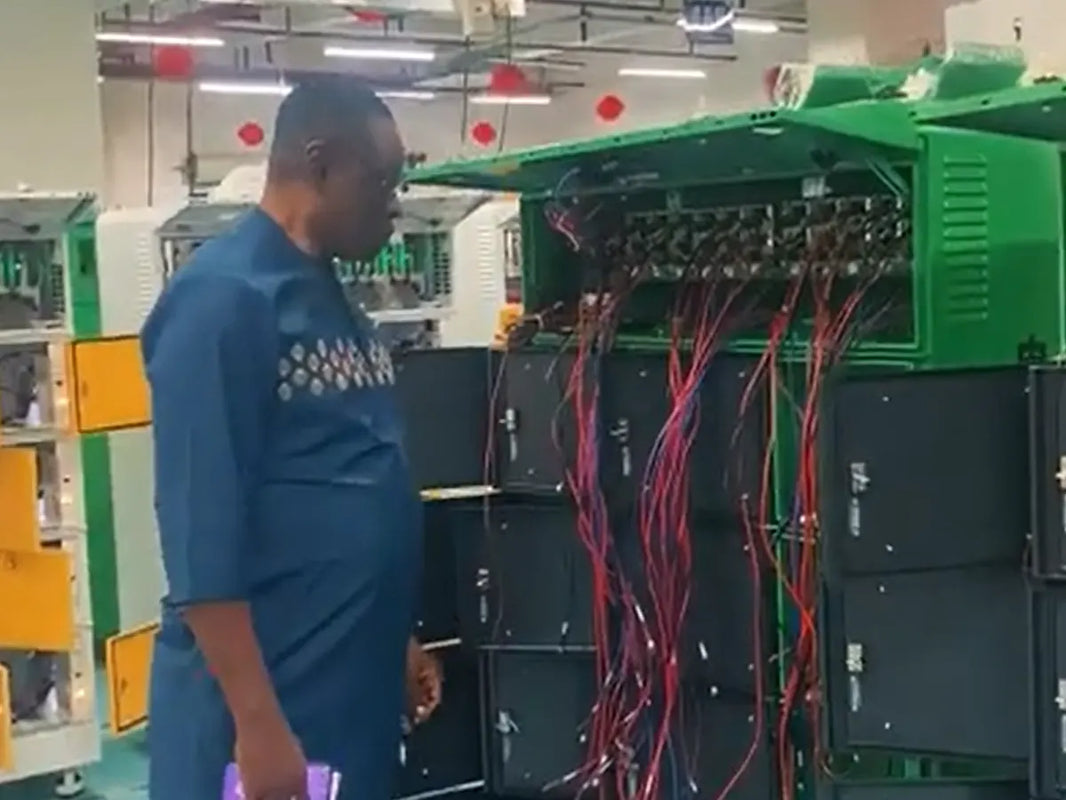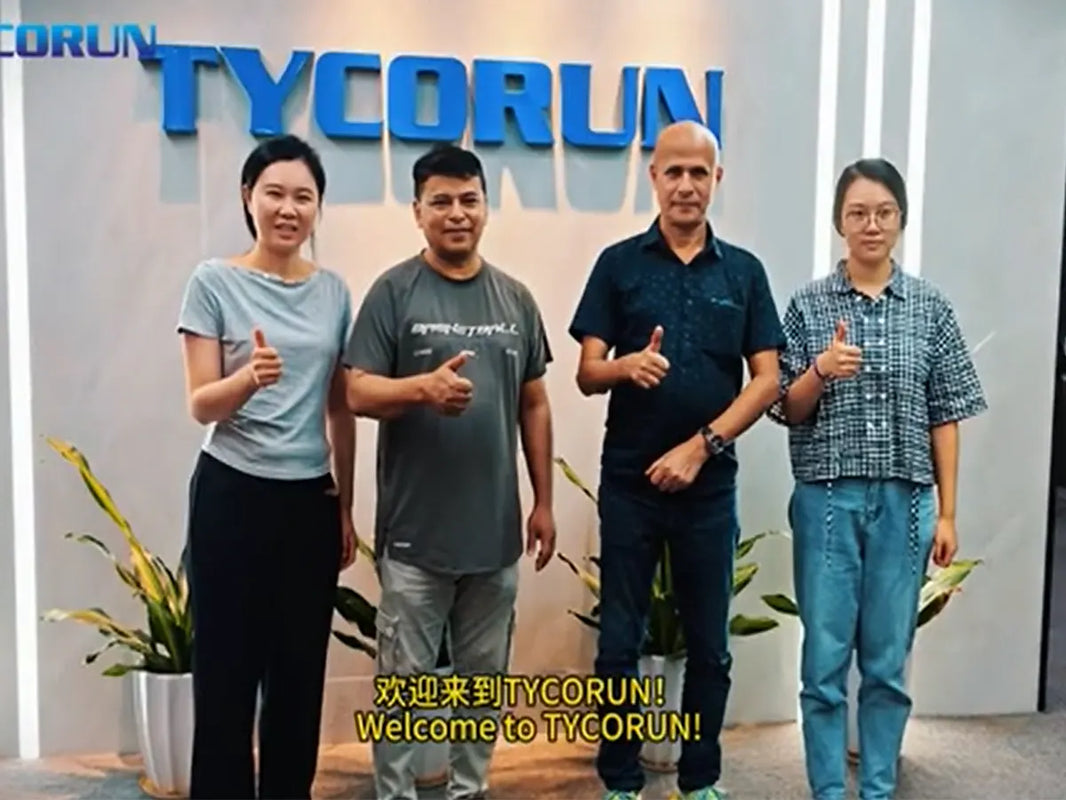
Main content:
According to a report by Mordor Intelligence, China's electric two-wheeler battery-swapping market is expected to reach US$460 million by the end of 2025, an approximate 24% increase from US$370 million in 2024. Furthermore, data from Grand View Research indicates that China's battery swap charging infrastructure market revenue reached US$20.7 million in 2024 and is expected to grow to US$76.3 million by 2030, with an average annual growth rate of 25.5%.
If you're not familiar with battery swapping, please check how does battery swapping work.
Main Users of Battery Swapping for Electric Two-Wheelers

Battery swapping for electric two-wheelers primarily involves both rider-based and residential battery swapping.
Rider-based Battery Swapping
The demand is clear, the business model is well-defined, and the development is relatively mature.
- Food delivery riders travel an average of 120 km per day, and existing electric two-wheeler batteries struggle to achieve a range of more than 100 km on a single charge.
- In areas like food delivery and express delivery, where time is money, riders demand long battery life and quick recharging times for their electric two-wheelers. This makes battery swapping a necessity. Riders swap their batteries an average of 2-3 times per day. Based on 13 million riders, the theoretical daily demand for battery swaps is at least 26 million.
Residential Battery Swapping
Residential Battery Swapping: Currently in its early stage, it is undergoing business model validation and optimization. However, long-term demand remains clear, and the market potential driven by the advantages of battery swapping is tremendous
- Battery quality on the supply side varies, making safety difficult to guarantee. Unauthorized modifications, indoor charging, and illegal charging by users have led to frequent accidents with electric two-wheelers. Residential battery swapping has become a new approach to battery replacement that can both reduce charging accidents and facilitate user use of batteries.
- China has over 400 million electric two-wheelers on the road. With the penetration rate of residential battery swapping reaching 10%, this would represent over 40 million vehicles using this model, creating enormous long-term potential.
- In May 2024, the Ministry of Industry and Information Technology (MIIT) spearheaded the formulation and release of the "Safety Technical Specifications for Lithium-ion Batteries for Electric Bicycles." Cities across the country, including Shenzhen, Nanjing, Guangzhou, and Shanghai, have actively responded, issuing regulations and policies specifically for the electric bicycle battery swap industry. "Battery swapping as the primary approach, with charging as a supplementary approach" has become a new approach to battery replacement for electric two-wheelers.
Current Development Status of Battery Swapping Operators

Rider-based battery swapping is relatively mature, with operators such as Tower Energy and Xiaoha Battery Swapping. While rider battery swapping is relatively mature in second-tier cities, future growth lies in increasing penetration in fourth- and fifth-tier cities.
Residential battery swapping is in its early stages, with fewer than 100,000 users currently.
With the gradual implementation of policies focusing on "battery swapping as a primary, charging as a supplementary" and the commercial model becoming established, residential battery swapping is expected to grow rapidly in the coming years.
Data shows that battery swap operators in China deployed 1.51 million battery units in 2024, a slight decrease from 2023. This is primarily due to a significant increase in battery capacity in 2022, resulting in lower-than-expected demand in 2024. With the gradual implementation of battery swapping policies and increased penetration in fourth- and fifth-tier cities, battery deployment is expected to increase over the next two years.
Pain Points in the Battery Swapping Industry
Heavy Asset Investment
The construction and operation of battery swap stations require significant capital investment, including hardware and equipment, software development, site rental, battery procurement, and maintenance. Batteries need to be replaced every 3-5 years, resulting in high operating costs.
Low Industry Standardization
Battery specifications and interface parameters vary across different brands of two-wheeled electric vehicles, leading to compatibility issues with battery swapping equipment. Furthermore, the lack of unified industry standards has limited the widespread adoption and promotion of battery swapping services.
Limited Battery Swapping Network Coverage
Especially in remote areas or suburban areas, users struggle to find suitable battery swapping stations(best battery swap station system). This limits the availability and convenience of battery swapping services.
Low Consumer Acceptance of Battery Swapping Services
Ordinary residents have concerns about the cost, safety, and convenience of battery swapping services. Most existing consumer-end household vehicles are not battery swappable, requiring modifications and the addition of adapters. Furthermore, current network coverage does not meet consumer needs. Coupled with the low cost-performance ratio, consumer acceptance is low.
Battery Safety and Performance Issues
Some substandard battery products currently exist on the market, potentially causing safety hazards and performance issues.
Development Trends of the Electric Two-Wheeled Battery Swapping Industry

Policy
Shenzhen, Shanghai, Guangzhou, Nanjing, and other cities have already introduced policies explicitly supporting the battery swapping model. The safety and efficiency advantages of battery swapping are significant, and more cities will likely introduce supporting policies in the future.
Development Model
The trend of "battery swapping as the primary, charging as the secondary" approach to charging for two-wheeled vehicles remains unchanged. Charging will remain the primary approach for charging for two-wheeled vehicles used by residents in the short and medium term.
However, with the implementation of relevant policies, the gradual optimization of business models and the gradual development of this "battery swapping as the primary, charging as the secondary" model will accelerate over the next few years. This will also gradually lead to the emergence of new business models and industry chains. The electric two-wheeled vehicle industry will undergo industrial upgrades and iterations based on battery swapping.
Market Size
The battery swapping industry will be driven by the increasing penetration of battery swapping among riders in fourth- and fifth-tier cities in the short and medium term, while the long-term growth driver will be the increasing penetration of battery swapping among residents. Residential battery swapping will provide a broad platform for the future development of the battery swapping industry.
Industry Standards
The specifications and interface parameters of electric two-wheeled vehicle batteries will gradually be standardized. Under the battery swap model, the four-party collaboration among vehicle manufacturers, battery manufacturers, battery swap operators, and component manufacturers will deepen and foster collaborative development, breaking down the current barriers of inconsistent battery swap standards and accelerating the industry's development.
Electric Two-Wheeled Battery Development Trends

Policy Level
Policies are driving demand growth. The trade-in policy will play a positive role in boosting demand for electric two-wheeled vehicles and related batteries.
Policy Safeguards. Policies related to electric two-wheeled vehicles are placing increasingly stringent safety requirements on both vehicles and batteries, leading to stricter oversight. With the implementation of policies 17761 and 43854, small-scale workshops lacking quality assurance will be gradually eliminated, reducing safety accidents in the two-wheeled vehicle industry at the source.
Technical Level
The penetration rate of lithium batteries will gradually increase. In the short term, lead-acid batteries will remain the mainstream, but with the implementation of relevant regulatory policies, advancements in lithium battery technology, and reductions in costs, lithium battery penetration is expected to rise in the long term.
The share of lithium iron phosphate batteries will gradually squeeze out that of ternary batteries. With the gradual implementation of the new national standard, the safety and cycle life advantages of lithium iron phosphate will be further highlighted. Coupled with its lower cost, the share of lithium iron phosphate will gradually increase.
Cylindrical battery applications are expected to increase. The gradual maturity of full-tab technology and the growth of overseas markets are driving the rapid development of cylindrical batteries. Emerging battery applications are increasing. Sodium batteries, lithium iron phosphate batteries, and semi-solid batteries.
Market Level
The Matthew effect is strengthening. With stricter regulatory policies and higher user demands for battery safety performance, small workshops and companies lacking technical support will be gradually eliminated, and market share will gradually shift to leading companies in the industry.
The importance of channel network development is increasing. With the increase in lithium battery shipments and replacement demand, channel network development has become a key focus for companies to better directly serve end customers.
Global expansion is accelerating. Competition in the domestic market is fierce, and internal competition is intensifying. Overseas markets such as Southeast Asia and India offer vast potential for development. The next two years will provide Chinese companies with an opportunity to seize the initiative in global expansion, and global expansion capabilities will become a core competitive advantage for leading companies.
Industry Level
Multiple technological routes are developing in a coordinated manner. In the short term, lead-acid batteries will dominate; in the medium term, lead-acid, lithium, and sodium batteries will coexist; in the long term, lithium and sodium batteries will dominate.
Strengthened collaboration across the upstream and downstream of the industry chain. Automakers and battery manufacturers, as well as battery manufacturers and material manufacturers, are collaborating to optimize resource allocation and jointly develop new technologies and products.
Conclusion
As battery standards unify, costs decrease, and policy support deepens, China’s battery-swap ecosystem will enter a rapid scale-up phase. Rider demand will remain the primary growth engine, while residential adoption will unlock massive potential. Over the next few years, technological innovation and overseas expansion will define the winners of this evolving two-wheeler energy revolution.
Related articles: top 10 battery swap station companies in Africa, how to use battery swap station correctly, battery swapping connector

